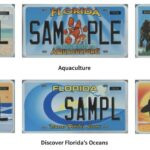Toyota is electrifying its lineup, and the revival of the iconic Previa minivan is the latest exciting chapter. Following the successful rebirth of models like the Supra, 86, and Land Cruiser, and with the Celica and MR2 also slated for a comeback, Toyota is now turning its attention to the minivan segment. According to reports from Japan’s Best Car magazine, the Toyota Previa, known as the Estima in Japan, is poised to make a grand return in 2026, potentially drawing design inspiration from the forward-thinking Fine Comfort Ride concept vehicle unveiled in 2017. This revival signals Toyota’s commitment to blending its rich heritage with cutting-edge technology to meet the evolving demands of the modern family and automotive market.
A Look Back: The Original Toyota Previa’s Journey in the US Market (1990-1997)
The first generation Toyota Previa, introduced to the US market from 1990 to 1997, aimed to challenge the dominance of domestic minivans like the Dodge Caravan, Chrysler Town & Country, and Plymouth Voyager. Imported from Japan, this 2.4-liter minivan, while innovative in its mid-engine design, faced an uphill battle. Despite its unique styling and Toyota’s reputation for quality, the original Previa struggled to capture significant market share. Several factors contributed to its lukewarm reception, including a higher price point compared to its American rivals, less favorable fuel economy, and a polarizing “egg-shaped” design. Furthermore, its mid-engine configuration limited the possibility of incorporating larger, more powerful engines, a preference for many US consumers at the time. After an initial peak in sales around 52,000 units in 1991, Previa’s popularity waned, culminating in a mere 3,780 units sold in its final year in 1997. This history underscores the challenges Toyota faces in reintroducing the Previa nameplate and the need to offer a compelling and competitive product for today’s market.
Electrification at the Forefront: Plug-in Hybrid and Battery Electric Toyota Previa Options
For its 2026 revival, Toyota is strategically positioning the new Previa to resonate with contemporary consumer preferences and environmental consciousness. The upcoming model is expected to leverage a versatile platform capable of accommodating both plug-in hybrid (PHEV) and battery electric vehicle (BEV) powertrains. While initial speculation suggested the use of Toyota’s dedicated e-TNGA BEV platform, insider sources indicate that the engineers are leaning towards the GA-K platform. This platform, which underpins successful models like the Toyota Crown, Camry, and RAV4, offers the flexibility to support both BEV and PHEV configurations. This dual-powertrain strategy reflects Toyota’s adaptive approach to the evolving electric vehicle market, catering to a broader spectrum of consumer needs and preferences.
Design Cues from the Future: The Fine Comfort Ride Concept and “Egg-Design” Evolution
The design direction for the resurrected Toyota Previa is anticipated to draw inspiration from the Toyota Fine Comfort Ride concept car, a radical minivan concept showcased in 2017. This concept, with its futuristic styling, offers hints at the potential aesthetic of the new Previa. The original Previa was known for its distinctive “egg-design,” characterized by its aerodynamic, ovoid shape. The new model is expected to inherit and modernize this design DNA, potentially incorporating elements from the Fine Comfort Ride concept to create a visually striking and aerodynamically efficient minivan for the modern era. While specific design details remain under wraps, the promise of a design evolution rooted in both heritage and future-forward thinking is generating considerable anticipation.
Strategic Shift: From Fuel Cell to PHEV and BEV Powertrains for the Toyota Minivan
Interestingly, the development path for the next-generation Toyota Previa initially explored hydrogen fuel cell technology. The original plan, according to Best Car, was to develop a fuel cell electric vehicle (FCEV) based on the Fine Comfort Ride FCEV concept, which debuted at the 2017 Tokyo Motor Show. However, due to limited public interest in fuel cell vehicles and the ongoing challenges in establishing a robust hydrogen infrastructure, Toyota strategically pivoted. The decision was made to transition the planned FCEV minivan into a vehicle powered by more readily available and market-accepted technologies: battery electric (BEV) and plug-in hybrid (PHEV) powertrains. This shift demonstrates Toyota’s pragmatic approach, prioritizing market viability and consumer demand in its electrification strategy.
PHEV’s Pivotal Role: Bridging the Gap in Toyota’s Electrified Lineup
Toyota’s decision to offer both BEV and PHEV versions of the new Previa underscores the strategic importance of plug-in hybrid technology in the current automotive landscape. While Toyota has ventured into the BEV market with the bZ4X, sales figures indicate that plug-in hybrids currently hold greater appeal for consumers. The bZ4X, facing range limitations and market challenges, has not achieved widespread sales success. In contrast, Toyota’s plug-in hybrid models, like the Prius Prime, are experiencing significant sales growth. For instance, Prius Prime sales surged by 293% in Q1 2024, highlighting the strong demand for PHEVs. In the US market during the same period, Toyota sold over 13,500 plug-in hybrids compared to just 1,897 BEVs. These figures strongly suggest that a plug-in hybrid variant will be crucial for the new Toyota Previa to achieve commercial success and resonate with a broader customer base seeking a balance of electric driving and range confidence. The revival of the Toyota Previa as a PHEV and BEV minivan represents a significant move by Toyota to strengthen its position in the minivan segment while embracing the electric future of automotive transportation.
